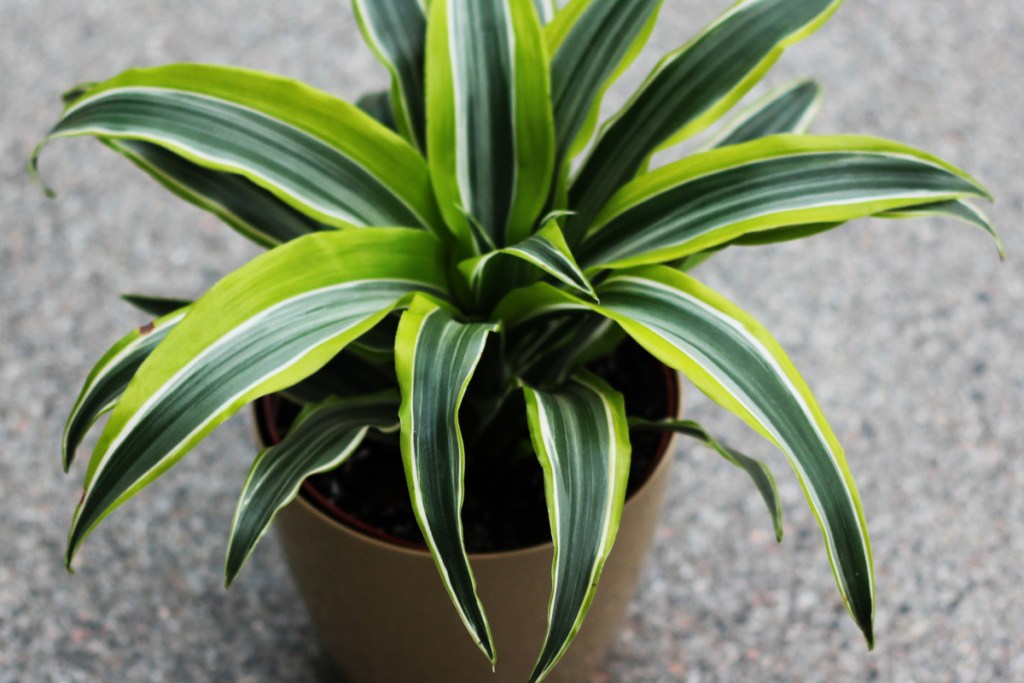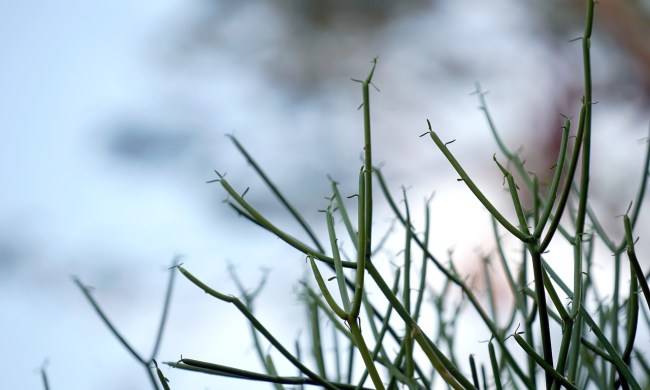Dracaena lemon lime (or Dracaena deremensis) is one of many Dracaena species that are growing more and more popular among avid indoor gardeners. Most varieties are named aptly for their appearance, with the Dracaena lemon lime sporting beautiful neon yellow and green striped leaves. When grown indoors, these plants usually grow under 10 feet — even smaller if you maintain them with the intent of having them be a tabletop plant.
But other than its unique appearance, what’s so great about the Dracaena lemon lime? And how do you care for it?

Why you should add a dracaena lemon lime to your collection
Other than their stunning foliage, Dracaenas have a couple benefits that make them a great plant for indoor gardeners. The first is that they need relatively little care. Dracaena lemon limes are easy to grow and maintain, and they’re a great option for beginner and experienced gardeners. Because the size can be easily managed with trimming, Dracaenas are perfect as floor plants or tabletop plants.
Dracaena lemon limes also have an added health benefit. They’re known to remove a certain amount of harmful toxins from the air, including benzene, carbon dioxide, formaldehyde, and trichloroethylene. Adding a few different varieties to your home (in addition to the lemon lime) will help keep your space fresh and bright!
How do you care for a lemon lime dracaena plant?
Caring for your Dracaena lemon lime is easy as long as you know what it needs. The requirements are similar whether you’re growing them indoors or outdoors. Dracaena lemon lime plants — and most other Dracaena varieties — prefer temperatures to be 65 degrees Fahrenheit or higher, which isn’t usually a problem when growing indoors. A general rule of thumb you can apply to most of your plants is that if you’re uncomfortable with the temperature, it’s likely they are too.
During the active growing season, Dracaena lemon limes should be fertilized. When growing in containers, you want to make sure you use a liquid fertilizer suitable for Dracaenas so that the roots have quicker access to the nutrients. Be cautious of over-fertilizing, too, as that can have adverse effects.
You only need to worry about repotting your Dracaena once every two years, or when the nutrients in the potting mix have started depleting. In general, they aren’t very demanding plants, and the most common problem is overwatering.
Light needs: Medium to bright indirect light; direct light will burn the leaves
Water needs: Enjoys regular watering; water only when the top inch of the soil is dry
Soil needs: Loose, well-draining, aerated soil; never let the soil dry out completely
Is lemon lime dracaena toxic?
Yes. Unfortunately, the Dracaena lemon lime is toxic to both cats and dogs. That doesn’t mean you can’t grow it, though! If your furry friends aren’t interested in chomping on houseplant foliage, then it’s fine to grow the Dracaena as a floor plant; however, if your pet likes to chew on your spider plant and bat at the leaves, it’s best to grow the Dracaena lemon lime on a shelf or a surface where the pets aren’t allowed to go and can’t easily reach.

Maintaining your dracaena lemon lime
Other than general care, there are things you can do to help your Dracaena grow to the best of its ability. Like all houseplants, it should be rotated periodically throughout the growing season to help promote fuller, even growth. Be sure to dust the leaves regularly to remove any unwanted build-up. (Why? Because too much dust actually inhibits a plant’s ability to photosynthesize and produce energy.) When dusting, always use a wet cloth and avoid using any shine sprays.
It’s also important to prune your houseplants! Even though they aren’t growing outside, regular pruning and trimming helps the plant look and feel its healthiest. It gets rid of dying or weakened foliage, which allows the plant to direct energy toward healthy, new growth.
The best time to grow a dracaena lemon lime
If you live in one of the ideal growing zones, you can plant your Dracaena lemon lime in an outdoor garden during the season! Dracaena plants shouldn’t be planted outdoors until temperatures are consistently above 50 degrees Fahrenheit (65 or higher is preferable). If you wish to overwinter your Dracaena, you can move it into a container and bring it indoors when temperatures start to stay around 50 to 65 degrees.
Similarly, if you live in an area outside of zones 10 through 12 but experience warmer summers, you can move your Dracaena to a well-lit patio, balcony, or deck space when temperatures are consistently above 65 degrees and bring them in again when they start to drop.
How to propagate your lemon lime dracaena
Dracaena lemon lime plants are relatively easy to propagate via a stem cutting. Take a sterilized pair of scissors or shears, cut a four- to six-inch long piece above a growth node, and place the cut end in a container filled with fresh potting soil. Make sure to keep the soil moist while the cutting is developing roots, which should start to appear in a few weeks.
Every houseplant is unique, which is why it’s important to know the specific care for each one you have. The Dracaena lemon lime is no exception, but is easy to get the hang of once you have one in your home.


